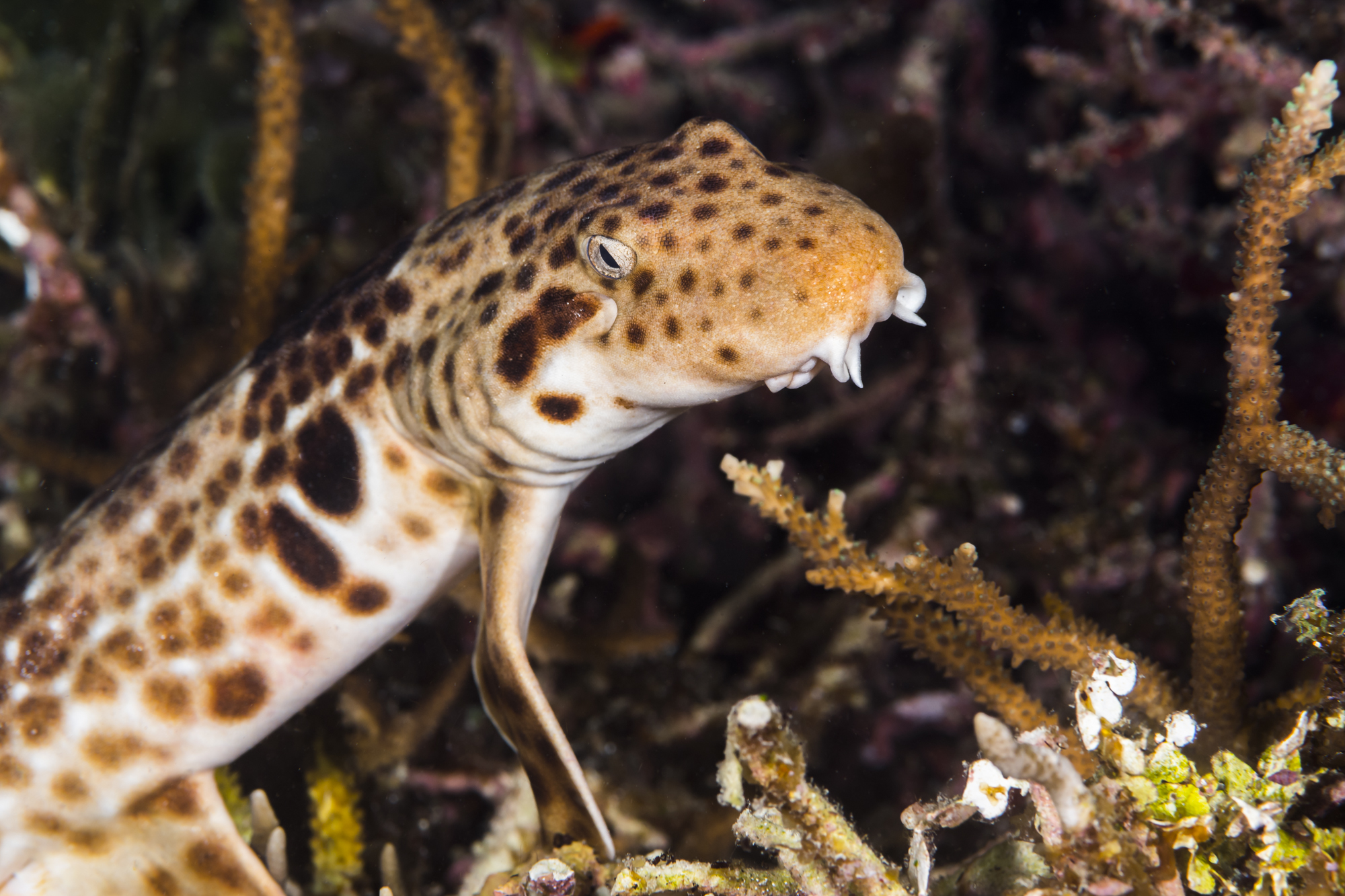
The Epaulette Shark: Raja Ampat’s Walking Sharks
Have you ever imagined what a shark walking on land would look like?
- July 11, 2024

Have you ever imagined what a shark walking on land would look like?
Raja Ampat’s epaulette shark is one of the smallest shark species in the world, but also the most fascinating creature. A species belonging to the carpet shark group, they have developed an astonishing way to use their fins: “walking” on land.
The epaulette shark, less than a meter long, is found in the shallow waters of coral reefs, mangrove roots, and seabeds where it feeds on bottom-inhabiting spineless creatures and hides from enemies.
In case it gets marooned because of the low tides, the epaulette shark can crawl or “walk” for a distance of 30 meters towards bigger and deeper water pools using its fins before maneuvering itself back to safety with the help of its small body.
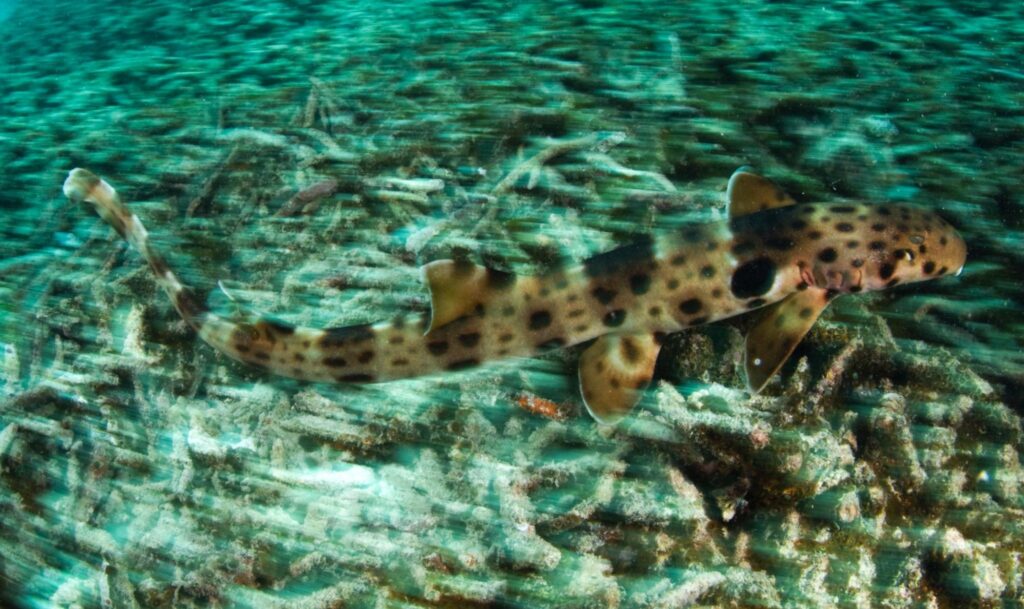
Epaulette Shark by Jennifer Hayes
Epaulette sharks can be found in the shallow waters amongst the coral reefs and rocky outcrops off Australia, Indonesia, and New Guinea at depths of 0-10 metres.
Here in Raja Ampat, the epaulette shark is a protected species under Indonesian law and is often referred to as Kalabia, Mandemor, or hiu berjalan in Indonesian, which translates to a walking shark.
According to the Save Our Seas Foundation survey, the epaulette shark can be found in seagrass meadows, corals, rocky outcrops, reef rubble patches, sandy fringes, and mangrove roots in Arborek and Yenbuba.
These walking sharks have been observed by the local villagers traveling close to the seashore due to the availability of clams and other food sources.
Why have epaulette sharks evolved to be able to “walk”? Scientists and marine experts have concluded that epaulette sharks walking is a survival instinct that has served them well. Some experts have even described the epaulette shark walking as “breaking all rules of survival”.
Often along the coastline, epaulette sharks inhabit shallow water pools that rise and fall with the tides. Sometimes, the epaulette shark may get caught in a small pool where oxygen levels are low and the sun’s rays are strong.
The epaulette shark will then use its paddle-like pectoral and pelvic fins to “walk” back to safety across larger water pools.
To see this fascinating behavior in action, check out our latest Instagram video, showcasing the Epaulette shark's unique "walking" technique.
In addition to being able to walk on land to escape from danger, epaulette sharks can tolerate a lack of oxygen for three hours without any ill effects by reducing their heart rate and breathing. This increases the blood supply to their brain, shutting down non-essential brain functions and ensures survival without oxygen for long periods.
Raja Ampat boasts numerous sightings of epaulette sharks, which are harmless towards humans but will swim or “walk” away if threatened.
If you ever come across an epaulette shark here in Raja Ampat, please do not touch it because it is likely to hurt both you and the shark – the teeth of an epaulette shark can be quite sharp and may bite when handled closely.
Most epaulette sharks are less than one meter long, slender-bodied with short heads, and wide paired fins. Many have brownish-yellow skin marked with dark spots, while others are just plain sandy-brown. The name “epaulette” comes from a big black spot surrounded by the white ring at the base of each pectoral fin that looks like military shoulder adornments.
Epaulette sharks belong to a group of sharks known as carpet sharks, which include the wobbegong sharks. Both types have attractive patterns on their bodies and can blend into their surroundings, helping them camouflage when searching for food.
It has been observed that crustaceans, worms as well as small spiny bony fish form the diet of epaulette sharks. Their teeth form a flat area when they close their jaws, allowing them to crush their prey’s hard shells.
Epaulette sharks are easily spotted in many areas of Raja Ampat, both near the shores and deeper under the sea. People have also seen such sharks near jetties or shallow docks. However, this is not always the case.
Alternatively, you could try out a night dive with Papua Diving Resort, where our experienced divers will guide you during low tide to observe these creatures in their habitat.
Read more: How to Go to Raja Ampat
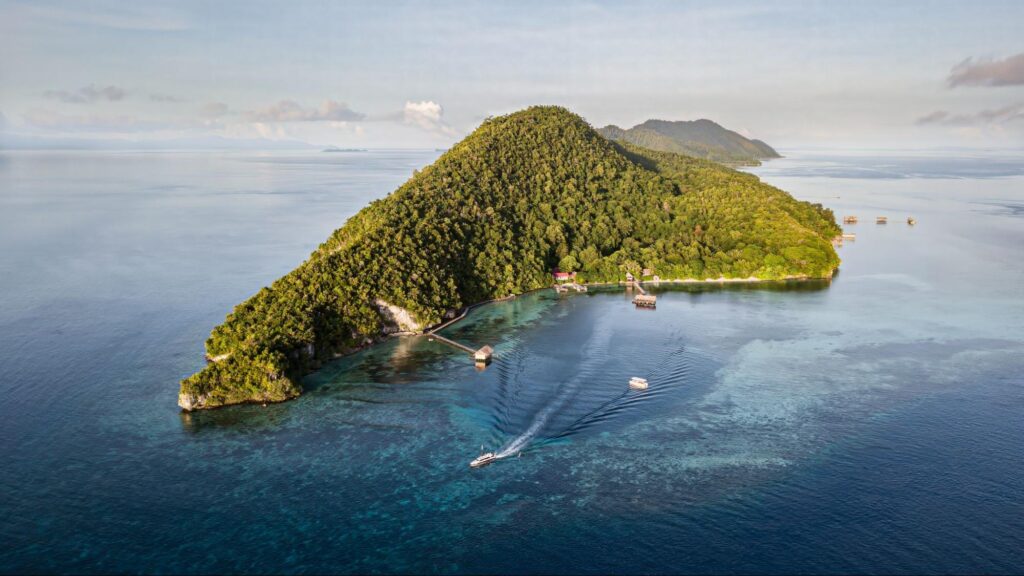
Papua Diving Resorts Aerial by Don Silcock
Explore Raja Ampat’s stunning marine and coral reef biodiversity with Papua Diving Resorts.
As the pioneers of diving in Raja Ampat having discovered most of the famous dive sites in the area, we have become the Raja Ampat dive center of choice for diving enthusiasts and documentary groups.
Our unique location along the Dampier Strait makes us a favorite with divers. Our two private dive resorts – Kri Eco Resort and Sorido Bay Resort – both come with their own dedicated dive centers offering PADI Dive Courses and fully serviced, high-quality rental equipment. Dives and courses are led by experienced PADI professionals with many years of experience.
There are hundreds of dive sites in Raja Ampat not too far away from Kri Eco Resort and Sorido Bay Resort, each with its own unique sights and appeal including Cape Kri, Manta Sandy, Melissa’s Garden, Blue Magic, Sardines, and so much more.
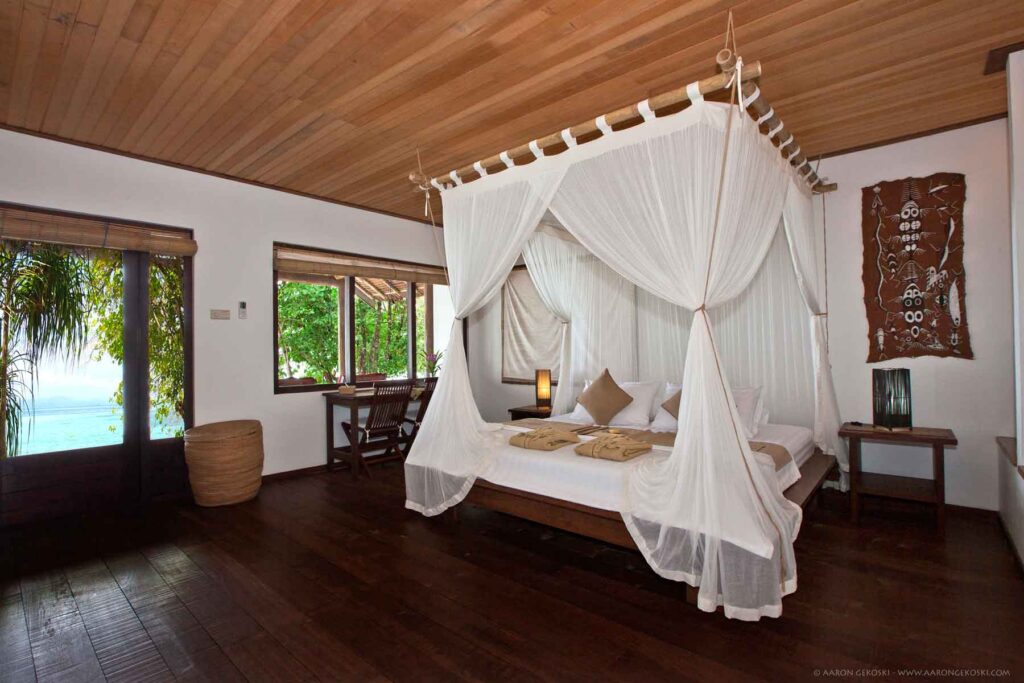
If you want to enjoy a perfect holiday in Indonesia’s warm climate, comfort is what matters most. Every bungalow at Sorido Bay Resort has its own air-conditioning unit that helps cool you down after a thrilling experience under the water of Raja Ampat.
Moreover, this convenience perfectly matches capacious chambers, private bathrooms as well as astonishing porch views which offer you an opportunity to relax in luxury.
Alternatively, ceiling fans are provided for those who prefer natural breezes and the flexibility it gives them in terms of their room temperature.
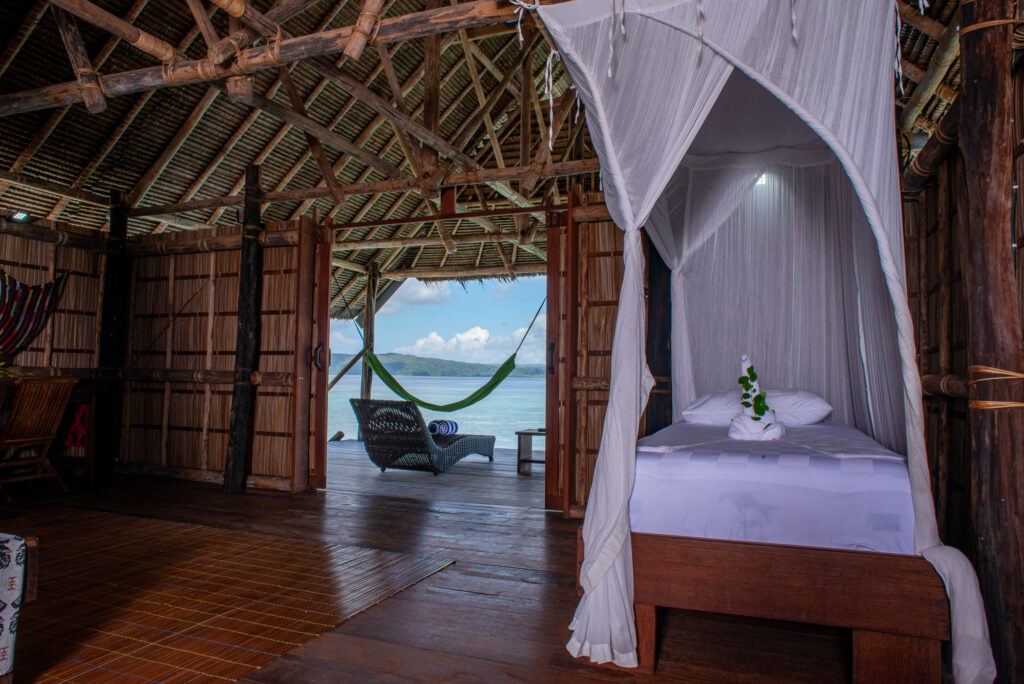
Looking out over the dark blue waters of the Dampier Strait and distant mountain ranges, Kri Eco Resort is a cluster of 13 authentic Papuan-style water bungalows built from locally sourced materials with 3 room types to choose from.
Ready to explore Raja Ampat with Papua Diving Resorts? Learn more about us and what we offer, and book your Raja Ampat holiday with the best rates and inclusions.

